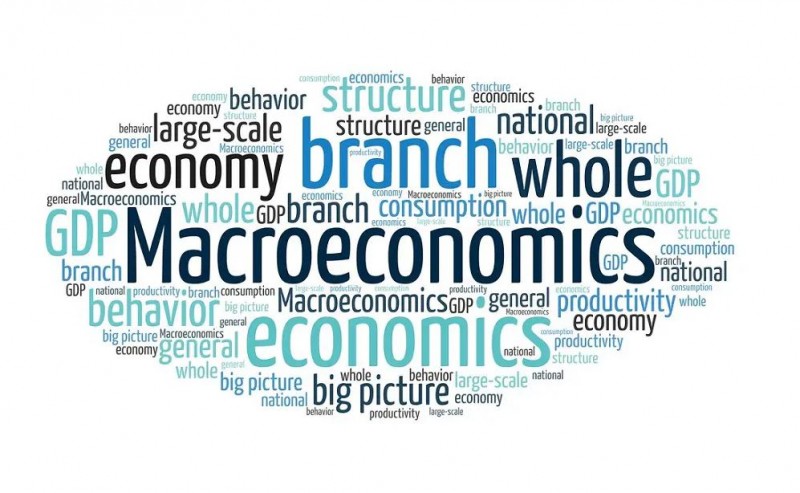
Macroeconomics is a branch of economics that focuses on the study of the overall behavior and performance of an economy as a whole. It examines factors such as economic growth, inflation, unemployment, and government policies that impact the entire economy rather than individual markets or industries. This article aims to provide a comprehensive overview of macroeconomics, its key concepts, theories, indicators, and its relevance to both the government and businesses.
Definition of Macroeconomics
Macroeconomics is the study of the economy at a broader level, analyzing aggregate economic variables such as total output, income, employment, and the general price level. It seeks to understand how these variables interact and influence each other to determine the overall health and stability of an economy. By studying macroeconomics, economists and policymakers gain insights into the factors that drive economic growth, shape business cycles, and guide policy decisions.
Gross Domestic Product (GDP)
Gross Domestic Product (GDP) measures the total value of all final goods and services produced within a country's borders during a specific period. It serves as a crucial indicator of a country's economic performance and is used to compare the economic output of different nations.
Inflation
Inflation refers to the sustained increase in the general price level of goods and services in an economy over time. It erodes the purchasing power of money and affects consumers' and businesses' behavior, interest rates, and overall economic stability.
Unemployment Rate
The unemployment rate measures the percentage of the labor force that is actively seeking employment but unable to find suitable jobs. It is an important economic indicator that reflects the health of the job market and the overall state of the economy.
Fiscal Policy
Fiscal policy involves the use of government spending and taxation to influence the economy. It aims to stabilize the economy, promote economic growth, and address issues such as unemployment and inflation. Fiscal policy tools include government spending on infrastructure projects, welfare programs, and changes in tax rates.
Monetary Policy
Monetary policy is conducted by a central bank to control the money supply, interest rates, and credit conditions in an economy. It aims to maintain price stability, promote economic growth, and regulate financial institutions. Central banks use tools like interest rate adjustments and open market operations to implement monetary policy.
Classical Economics
Classical economics, developed by economists such as Adam Smith and David Ricardo, emphasizes the role of free markets and individual decision-making in determining economic outcomes. It argues that markets are self-regulating and will naturally reach a state of equilibrium.
Keynesian Economics
Keynesian economics, advocated by John Maynard Keynes, focuses on the role of government intervention in managing the economy. It argues that government spending and policies can mitigate economic downturns and stimulate growth during recessions.
Monetarism
Monetarism, associated with economist Milton Friedman, highlights the importance of controlling the money supply to stabilize the economy. It argues that excessive growth in the money supply leads to inflation and that monetary policy should be predictable and rule-based.
Macroeconomic Indicators
Consumer Price Index (CPI)
The Consumer Price Index (CPI) measures changes in the average prices of a basket of goods and services purchased by households. It provides insights into inflation trends and serves as a gauge for the purchasing power of consumers.
Gross Domestic Product (GDP)
Gross Domestic Product (GDP), as mentioned earlier, measures the total value of goods and services produced in an economy. It is often used to assess economic growth and is divided into different components, such as consumption, investment, government spending, and net exports.
Unemployment Rate
The unemployment rate, as mentioned earlier, reflects the proportion of people who are actively seeking employment but are currently unemployed. A low unemployment rate indicates a strong job market and a healthier economy.
Interest Rates
Interest rates represent the cost of borrowing money and influence various economic activities. Central banks adjust interest rates to manage inflation, stimulate or cool down economic activity, and control the money supply.
Exchange Rates
Exchange rates determine the value of one currency relative to another. They impact international trade, tourism, and foreign investment, and their fluctuations can affect a country's competitiveness and balance of trade.
The Role of Government in Macroeconomics
Governments play a crucial role in macroeconomics by implementing policies that aim to stabilize the economy, promote growth, and address social and economic challenges. Through fiscal policy and monetary policy, governments can influence aggregate demand, regulate inflation, manage unemployment, and maintain economic stability.
Macroeconomics and Business
Macroeconomic factors significantly impact businesses' operations and decision-making processes. Fluctuations in economic growth, inflation rates, interest rates, and exchange rates can affect consumer demand, production costs, borrowing costs, and profitability. Businesses closely monitor macroeconomic indicators to anticipate changes in the business environment and make informed strategic decisions.
Challenges and Criticisms of Macroeconomics
Macroeconomics, like any field of study, has its challenges and criticisms. Critics argue that macroeconomic models oversimplify the complexities of real-world economies and may fail to accurately predict economic outcomes. Additionally, the assumptions made by different macroeconomic theories can lead to conflicting policy recommendations. There is an ongoing debate among economists regarding the appropriate level of government intervention and the effectiveness of macroeconomic policies.
Conclusion
Macroeconomics provides a framework for understanding the big picture of the economy. By studying key concepts, theories, and indicators, economists and policymakers gain valuable insights into the factors that shape economic performance and guide policy decisions. Understanding macroeconomics is essential for businesses to navigate the ever-changing economic landscape and make informed decisions to drive growth and profitability.
Demystifying the Indian Economy: Insights and Analysis